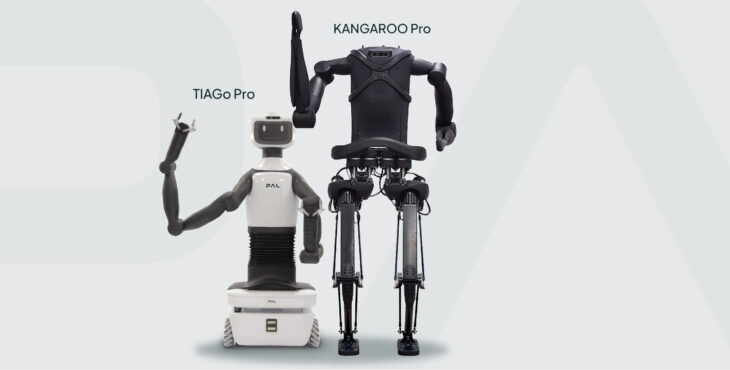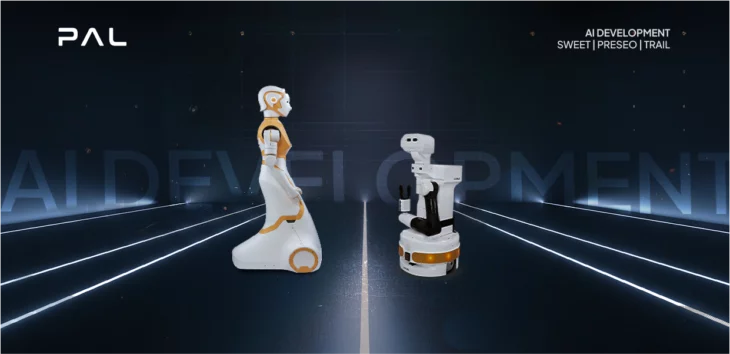
As we look ahead and get ready for NRF 2025, the biggest event in retail happening from January 12-14, the spotlight is on retail technology innovations and the trends shaping the future of retail in 2025. Over the years, topics like streamlined omnichannel strategies, sustainable retail practices, and personalized shopping experiences have been at the forefront of conversations—key to understanding how retailers can connect with today’s conscious consumers and build lasting loyalty.
At PAL Robotics, we’ve seen how innovations like intelligent retail solutions, retail robotics for inventory management, and smart retail technology are transforming the industry. In this post, we’ll focus on one specific prediction that, for us, is at the center of the conversation: sustainability. One of NRF´s spotlights this year will be focused on circular business models, sustainable supply chains, and the importance of aligning brand values with social responsibility. These conversations are key to understanding how retailers can connect with today’s conscious consumers and build lasting loyalty.
Want to understand what all of these key points it means for retailers, and how the right tools can help businesses future-proof retail operations while maintaining brand’s relevance? Keep reading to understand.
Read in this article:
- Why sustainability matters in retail
- Traceability and RFID for sustainable supply chains
- Driving sustainability with StockBot
- Join us at NRF 2025
Why sustainability is at the center of NRF 2025 predictions
Sustainability can no longer be just a nice-to-have narrative or marketing campaign for retail—it’s now a core expectation for customers and an industry-wide priority. Today’s shoppers, especially those under 35, are choosing brands that actively embrace sustainable practices and are transparent about their efforts and implementation.
A recent report called Westfield How We Shop: The Next Decade predicts the coming of changes in people’s shopping habits, based on 15,700 consumer interviews across ten countries in Europe including the UK, France, Spain, Germany, Austria, Sweden, Poland, the Czech Republic, Italy and the Netherlands. In this study, nearly half of young consumers say they avoid brands that don’t offer environmentally friendly options, and 60% are willing to pay more for products from retailers who clearly communicate their sustainability efforts.
“Young consumers demand sustainability: nearly half avoid non-environmentally friendly brands, and 60% are willing to pay more for transparency—tools like RFID and StockBot turn this demand into actionable change.”
Data: Westfield How We Shop: The Next Decade
For retailers, this is more than just a challenge—it’s an opportunity to connect with customers, build loyalty, and even improve business efficiency. The demand for transparency is loud and clear: 64% of consumers want better sourcing information, and 59% are asking for a universal sustainability grading system. Meeting these expectations requires more than good intentions; it requires the right tools to create real change. That’s where RFID technology and solutions like StockBot step in, making sustainability practical and actionable.
Traceability: a key to retail sustainability
To understand where the product is coming from, its life cycle and how it is disposed of is becoming one of the most effective tools for creating not only sustainable supply chains, but also trust with customers. With RFID technology, brands can track and manage products every step of the way—from the manufacturing process and sources, going through store shelves and beyond.
- Sources: how responsible is the sourcing process? Whose labor is involved in the production? How much is being produced?
- Shelf life: how long does a product remain in store? What are the hot spots in store and where does it perform better? How accurate is the restocking process?
- The end-cycle: how is the product being disposed of? What is the recycling process? How long does it take for certain materials to be reabsorbed in the environment or supply chain?
Traceability means more than just tracking the physical movement of products—it involves gathering essential data, such as the origin of materials, manufacturing processes, and compliance with standards. A recent advancement in this direction is being pushed by brands developing garments with washable RFID tags, that can be sorted and tracked even during dyeing or washing stages, reducing errors and waste during production. These same tags ensure better resource allocation as products move through the supply chain, from warehouses to retail floors.
“Traceability builds trust and drives sustainability: RFID technology enables brands to track every step of a product’s journey—from sourcing to disposal—meeting customer demand for transparency and reducing waste in supply chains.”
For customers, traceability provides the transparency they’re asking for. It allows retailers to show how and where products are made, building trust with shoppers. At a time when nearly half of customers say they’d spend more on sustainable brands, investing in traceability is key.
Transparency and education: building customer loyalty
This complex and multi-layered topic should not be tackled only by offering eco-friendly options and displaying results every now and then. Educating consumers on the industry´s challenges and changes and being transparent about them is an ongoing practice, and it can expand and create new and enriching conversations. A significant 25% of the customers that participated in Westfield´s report believe that brands need to provide more information and training around sustainable practices, while 77% recognize that technology, including AI and robotics, can play a key role in helping them make informed decisions.
“Transparency and education matter: 25% of consumers want brands to provide more training on sustainability, and 77% see technology, like AI and robotics, as key to making informed decisions.”
This means retailers need to go beyond product labels. Sharing easily accessible sustainability content and offering insights into how products are made helps customers feel informed and valued.
Driving sustainability with StockBot and RFID
At PAL Robotics, we believe it’s time to stop talking about “inventory management” as one of retail´s main challenges. In the grand scheme of things, this issue is being tackled by global brands through RFID technology, and the positive results are cascading throughout different sized players in the market. The benefits of the combination of robotics with smart labeling can be seen with streamlined operations, as we can prove with Decathlon’s success case.
But facing 2025, we want to drive this conversation forward, and explain how our RFID robot StockBot can collaborate with retailers to make smarter, more impactful actions that reduce waste and streamline processes. For example, by leveraging RFID technology, StockBot helps avoid overproduction, ensures the right products are always in stock, and reduces excess inventory.

The new conversation we want to start is to show how to make the most of every product, every material, and every step of the process. This year, we’re not just solving problems; we’re changing the game, proving that retail technology innovations can create a more efficient and sustainable future for everyone.
Let´s keep this conversation going
Join us at NRF 2025 and experience the future of retail technology. Visit our booth from January 12–14 to see StockBot in action. Book a meeting with our team to discuss how we can support your business goals, or stop by for live demos and exclusive insights into the retail trends shaping 2025.
Book your meeting now | Learn more about the event
Follow our Retail Page on LinkedIn, where we share insights, StockBot success cases, industry trends and the newest advancements on RFID technology.


